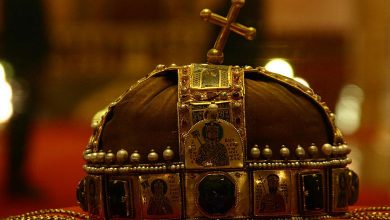Ten Europe-related Facts You Might Not Know About Tarot Cards

Tarot cards are widely known for divinatory purposes, nowadays, but their original function was to play games. The first documented tarot packs were recorded between 1440 and 1450 in northern Italy, especially in Milan, Ferrara, Bologna and Florence.
A deck is composed of 78 cards and divided into two groups. The first group is known as Minor Arcana and contains 56 cards in the four standard suits (Batons, Swords, Cups and Coins). Each suit has ten pips and four face cards (Page, Knight, Queen and King). The second group is more interesting when talking about tarot cards. It’s known as Major Arcana and it contains 22 picture cards, which serve as trumps and are numbered with Roman numerals. Those cards depict not only the European characters of the 15th century but also allegories and religious ideas.

Here are some curious Europe-related facts about tarot cards.
# 1 – The most famous tarot card pattern is called “Tarot of Marseille”.
Although as the name suggests, the cards were not invented in the homonymous French city. As written before, they were created in northern Italy. They were introduced into southern France after the French conquered Milan and Piedmont in 1499. It gained popularity as a card game there while the game eventually died out in Italy. The game was then reintroduced in Italy, and the name “Tarot of Marseille” stuck to the game.

#2 – The Fool is related to the Wild Man.
The Fool, also called The Jester, is the only generally unnumbered trump card. It’s also considered as the most valuable card of the deck. The Fool is related to the Wild Man who is a mythical figure that appears in the artwork and literature of medieval Europe. They are both connected to the concept of divine madness, a manifestation of enlightened behaviour by people who have transcended societal norms.
#3 – The High Priestess (II) was originally called The Popess.
This card possibly refers to the legendary female Pope Joan. The story first appeared in chronicles in the 13th century and later spread throughout Europe. Joan was described as a talented woman and a master of disguise. She disguised herself as a man and rose through the Church hierarchy where she was eventually elected as pope. She was exposed after she gave birth during a procession. The legend was widely believed for centuries, including the period when tarots were invented, but most modern scholars regard it as imaginary.

#4 – In historical decks, both The Empress (III) and the Emperor (IV) are holding a shield that bears an eagle.
The eagle is the heraldic emblem of the Holy Roman Empire.
#5 – The Hierophant (V) was originally called The Pope.
This was because The Pope controlled political and military forces besides religion as opposed to the Emperor when the cards were invented. Sometimes the four cards depicting The Popess, the Empress, the Emperor and The Pope were censored altogether. The Bolognese cards replaced them with four Moors or Turks.
#6 – The Chariot (VII) is linked to the Chariot Allegory as told by the Greek philosopher Plato.
In particular, the Rider-Waite tarot deck depicts the chariot being pulled by two sphinxes, one white and one black. Plato’s Chariot Allegory represents the human soul as a chariot. The white sphinx symbolises logic and intellect and the black one represents irrational passions and desires.
#7 – Justice (VIII), Strength (XI) and Temperance (XIV) represent three of the four cardinal virtues as women.

The four cardinal virtues were recognized in classical antiquity and traditional Christian theology as Prudence, Fortitude, Temperance and Justice. Although, Prudence is usually not included.
#8 – The Wheel of Fortune (X) recalls another medieval philosophical concept: Rota Fortunae.
The Wheel of Fortune represents the capricious nature of fate that can be favourable and disadvantageous for everyone, whether rich or poor. The idea comes from the zodiac that was first invented in Babylon and later developed by the ancient Greeks. In the middle ages, the Wheel of Fortune was largely used in religious instruction, politics and general culture. For instance, we can find references in the Mirrors for Princes and in Carmina Burana. Later on, the concept was used in literature: Shakespeare in Hamlet and Henry V. It’s used in recent times as well: German composer Carl Orff’s O Fortuna and the television show Wheel of Fortune.
#9 – The Hanged Man (XII) depicts a pittura infamante, an image of a man hanged upside-down by an ankle.

Pittura infamante was a genre of defamatory painting, which was common in Renaissance Italy. This particular method of hanging was a common punishment for traitors, so pitture infamanti were a medium to obtain character assassination. In fact, popular subjects were traitors, thieves and people guilty of bankruptcy or public fraud in cases where there was no legal remedy available. The paintings were displayed in public places to openly humiliate the subjects.
#10 – Death (XIII) usually portrays a Grim Reaper.
The Grim Reaper is a personification of death commonly found throughout all European art and culture. While the other Major Arcana are usually labelled, for Death the name is often omitted. For this reason, the card was simply called “The Card with No Name”. The Grim Reaper is found in different forms in European folklore. For instance, it can directly cause the victim’s death, or it can only be a psychopomp; furthermore, it can be a male or a female personification.
Did you enjoy this article? You may also like Top Ten Famous Dance Songs That Are Actually European





